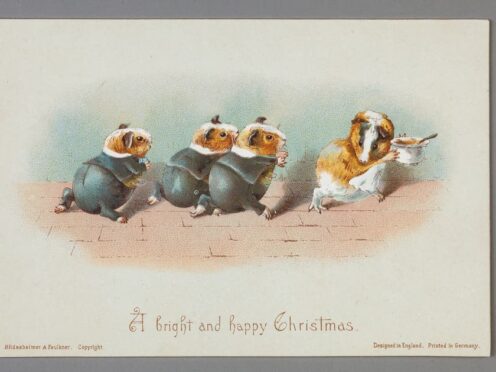Three Christmas cards designed by a young Beatrix Potter are to go on display at the Victoria and Albert Museum (V&A) in the new year.
Made when Potter was 23 to provide friends and family with “five minutes’ wonder”, they were her first commercially successful works and marked the start of her career as an illustrator.
They will be displayed as part of the Drawn To Nature exhibition at the V&A, which will open in February and tell her life story through more than 240 personal objects.

Potter, who was born in 1866 and died in 1943, remains best known for her children’s books featuring animals, such as The Tale Of Peter Rabbit, but was also a prominent natural scientist and conservationist.
The popularity of the cards encouraged Potter to approach greeting cards publishers with her work, and in 1890 her designs were commissioned by London-based company Hildesheimer & Faulkner.
The first two cards show off her famous anthropomorphic style of illustrating animals – one from the V&A’s collection depicts a rabbit inspired by her pet, the “charming rascal” Benjamin Bouncer delivering Christmas post, while one on loan from the National Trust features guinea pigs dressed in school uniform, chasing after their mother.
Going on display for the first time in 20 years, the third card is a hand-drawn prototype for an “elaborate” card requested by Hildesheimer & Faulkner showing an autumnal scene of a field mouse in a nest of leaves.
It was never printed widely after publishers instead selected an illustration of mice in a coconut.
Annemarie Bilclough, the museum’s curator of illustration, and Frederick Warne, curator of the exhibition, said: “We are delighted to be able to include an original design and two examples of Christmas cards printed from designs by Beatrix Potter, her first commercially sold illustrations.
“The cards such are an important part of the story of Beatrix’s journey to becoming an author- illustrator and the success of the cards speaks to her practical mind and business acumen.”
– Beatrix Potter: Drawn To Nature runs from February 12 2022 to January 8 2023.
